- This photo
feature shares the joy, in a poetic way, of being in the backwaters of
Kumarakom Bird Sanctuary.
Our recent
family expedition to the lush backwaters of Kumarakom Bird Sanctuary, embarking
from the Taj Kumarakom, was a captivating journey through a mesmerizing tableau
of vibrant colors, exotic flora, and intriguing fauna. We chose to explore the
labyrinthine waterways, a mosaic of lakes, lagoons, and canals, aboard a
traditional Kettuvallam - a charming,
thatched-roof houseboat, painstakingly crafted from eco-friendly materials such
as bamboo, palm leaves, and wood.
As we gently
meandered through the serene waters, the first element that struck us was the
enchanting symphony of nature. The gentle lapping of water against the boat,
the melodious chorus of birds, and the rustling of leaves in the gentle morning
breeze orchestrated a soothing symphony that lulled us into a state of
tranquility.
The water hyacinths adorned the water's surface, creating a kaleidoscope of colors. The water hyacinths, with their delicate lavender flowers, being the elegant white and pink, epitomized grace and beauty. These aquatic plants, apart from being visually captivating, play a pivotal role in maintaining the ecological balance of the backwaters.
As we ventured
deeper into the sanctuary, we were greeted by a plethora of avian species,
several of which were perched atop the dead wood trunks protruding from the
water. Among these were the elegant egrets, with their pristine white plumage
and long, slender necks. These birds, often mistaken for herons, are actually
part of the same family (Ardeidae), and are known for their grace and poise.
Another
fascinating bird species we encountered was the Indian Pond Heron (Ardeola
grayii), also known as the Paddybird. These birds, with their slate-grey and
white plumage, are adept at camouflaging amidst the aquatic vegetation. They
are carnivorous, primarily feeding on fish, amphibians, and crustaceans.
The sanctuary is
also home to the Asian Openbill Stork (Anastomus oscitans), a large wading bird
with a distinct, oversized bill. These birds are unique, as their bills are
partially open at rest, and they use their unique bill structure to pry open
the shells of mollusks and snails.
Our early
morning sojourn through the Kumarakom Bird Sanctuary was an enriching
experience, offering us a rare opportunity to connect with nature and
appreciate the intricate web of life. We returned with a renewed sense of
respect for the environment and a treasure trove of memories, encapsulated in
our cherished family photographs.
A few interesting trivia about the Kumarakom Bird Sanctuary:
The sanctuary, initially known as Baker's Estate, was established in 1990 and is spread over 14 acres. It is a veritable haven for birdwatchers and nature enthusiasts.
The sanctuary is
nestled on the banks of the Vembanad Lake, the longest lake in India and the
largest in Kerala.
The region is a
part of the Kuttanad area, one of the few places in the world where farming is
carried out below sea level.
The sanctuary is
home to over 200 bird species, including both migratory and resident birds.
The best time to
visit the sanctuary is between November and February, when the migratory birds
flock to the region.
The sanctuary is
accessible by road, rail, and air, with the nearest airport being Kochi
(Nedumbassery) International Airport, located approximately 85 km away.
Our visit to the Kumarakom Bird Sanctuary was not merely a sightseeing excursion; it was a profound journey into the heart of nature's splendor. The memories of the vibrant hyacinths, the serene water lillies, and the majestic birds that call this sanctuary home will forever be etched in our minds, serving as a reminder of the beauty and fragility of our natural world.
This unforgettable experience left us with a newfound appreciation for the delicate balance of the ecosystem and the breathtaking beauty of the Kumarakom Bird Sanctuary. Now some pictures.
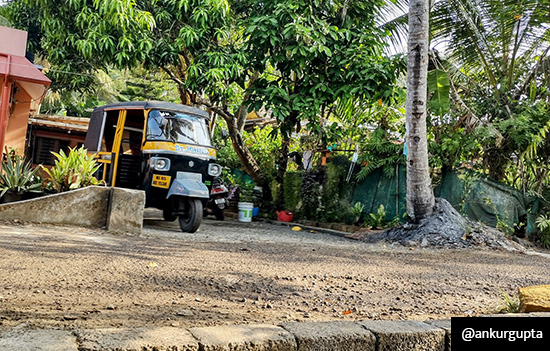 The auto-rickshaw which brought us to the boating community through rough roads from our hotel and remains parked for an hour to take us back.
The auto-rickshaw which brought us to the boating community through rough roads from our hotel and remains parked for an hour to take us back.
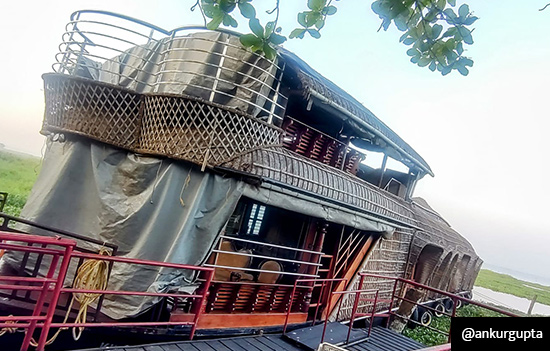 This is one of a kind for a five hour cruise complete with beds and dining room area for larger groups with refreshments including lunch on board.
This is one of a kind for a five hour cruise complete with beds and dining room area for larger groups with refreshments including lunch on board.
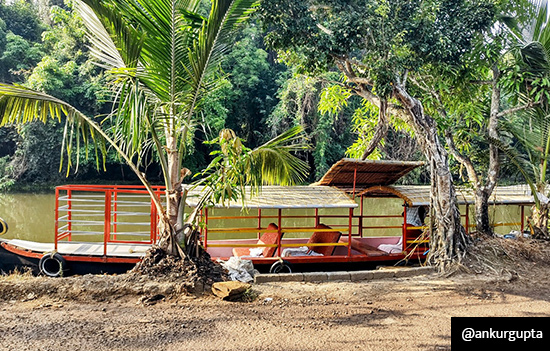 Embarking on a serene journey through the backwaters in a traditional boat, we set sail towards the tranquil Kumarakom Bird Sanctuary.
Embarking on a serene journey through the backwaters in a traditional boat, we set sail towards the tranquil Kumarakom Bird Sanctuary.
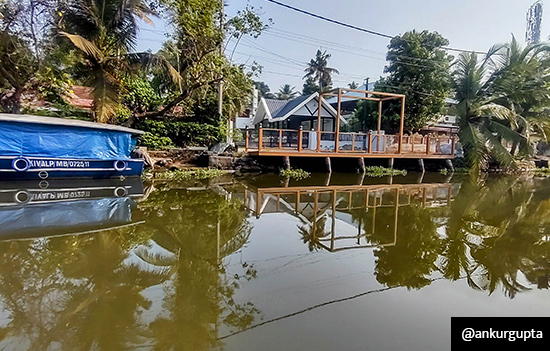 A picturesque glimpse into the village life, where homes seamlessly blend with the waterways, each adorned with their own vessel to welcome visitors on a memorable aquatic experience.
A picturesque glimpse into the village life, where homes seamlessly blend with the waterways, each adorned with their own vessel to welcome visitors on a memorable aquatic experience.
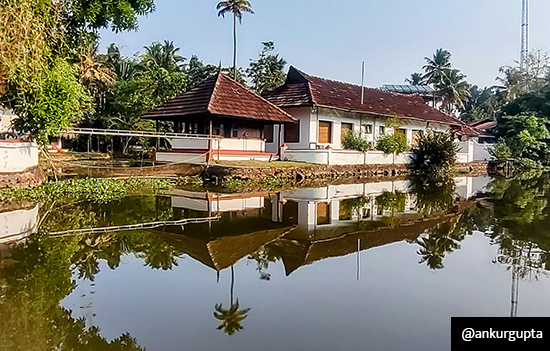 The still waters mirror the rustic charm of the village, reflecting a world untouched by the haste of modernity, inviting us to immerse ourselves in its tranquil beauty
The still waters mirror the rustic charm of the village, reflecting a world untouched by the haste of modernity, inviting us to immerse ourselves in its tranquil beauty
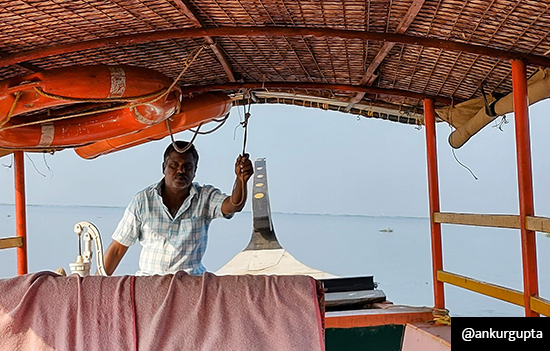 Our knowledgeable guide and skilful navigator, a local resident well-versed in the nuances of these serene waterways, ensuring a captivating and enlightening exploration of the sanctuary's rich avian diversity.
Our knowledgeable guide and skilful navigator, a local resident well-versed in the nuances of these serene waterways, ensuring a captivating and enlightening exploration of the sanctuary's rich avian diversity.
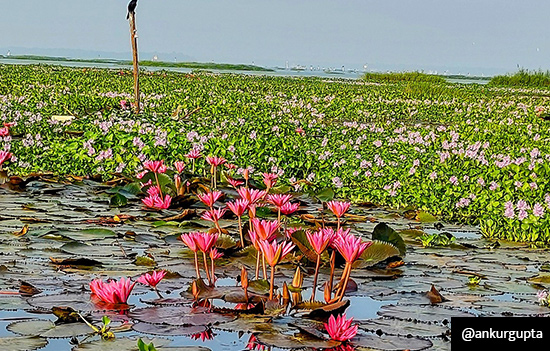 A vibrant tapestry of aquatic blooms! These water lilies or Hyacinths (both red as well as white) share the sanctuary's waters, creating a stunning natural display.
A vibrant tapestry of aquatic blooms! These water lilies or Hyacinths (both red as well as white) share the sanctuary's waters, creating a stunning natural display.
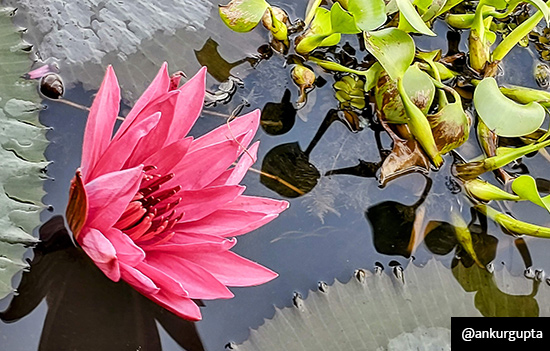 Nature's masterpiece in full bloom. Exploring the water lillies along with co-existing hyacinths or water lilies of the Kumarakom Bird Sanctuary.
Nature's masterpiece in full bloom. Exploring the water lillies along with co-existing hyacinths or water lilies of the Kumarakom Bird Sanctuary.
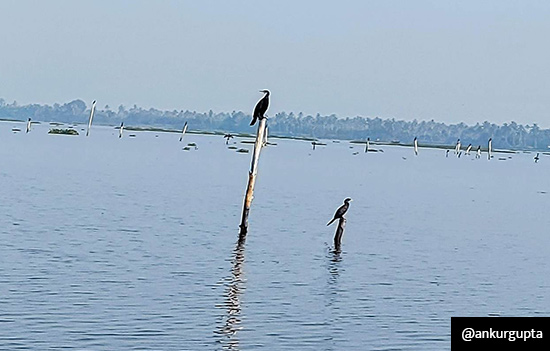 These avian sentinels keep watch from their perches atop the weathered tree trunks in the Kerala backwaters while scouting for food. Even dead trees provide shelter & life in the rich ecosystem of this Bird Sanctuary.
These avian sentinels keep watch from their perches atop the weathered tree trunks in the Kerala backwaters while scouting for food. Even dead trees provide shelter & life in the rich ecosystem of this Bird Sanctuary.
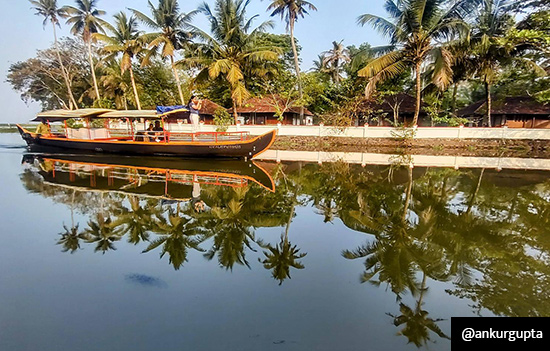 Tranquil reflections as we depart the Kumarakom Bird Sanctuary. The serenity of the "mouth of the waters" lingers as we head back.
Tranquil reflections as we depart the Kumarakom Bird Sanctuary. The serenity of the "mouth of the waters" lingers as we head back.
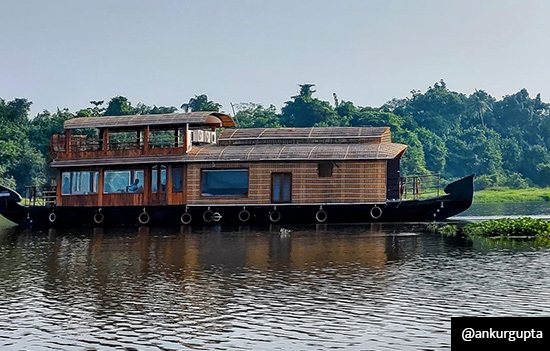 Bidding farewell to the serene sanctuary, we encounter the grandeur of houseboats on the main waterways. Each one a floating palace, cruising the backwaters of Kumarakom.
Bidding farewell to the serene sanctuary, we encounter the grandeur of houseboats on the main waterways. Each one a floating palace, cruising the backwaters of Kumarakom.
To read all
articles by author